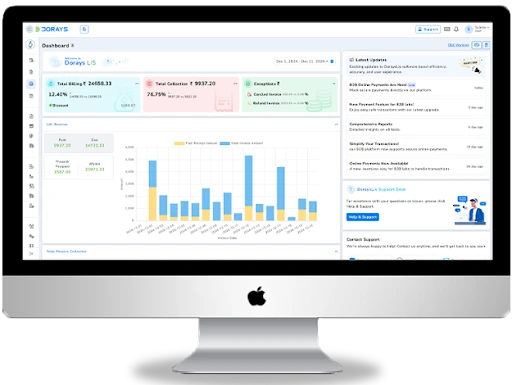Pathology
Modern laboratories face growing demands for efficiency in data handling and workflow optimisation, making Laboratory Information Management Systems (LIMS) an essential tool. By enabling better organisation, automation, and compliance, LIMS solutions have become a linchpin for labs across all disciplines. But with so many options available, one key question arises: which type of LIMS should you choose for your lab?
This post explores the three primary types of LIMS—Commercial, Custom, and Open-source—and their unique characteristics, advantages, and limitations. By the end, you’ll understand the pros and cons of each, as well as how to evaluate which might be the best fit for your needs.
Types of LIMS An Overview
Not all LIMS are created equal, and their differences can significantly impact your laboratory’s operations. Broadly, LIMS can be categorised into three main types:
- Commercial LIMS
- Custom LIMS
- Open-source LIMS
Each type caters to different needs and challenges, making it crucial to evaluate these systems within the context of your lab’s goals and resources.
Commercial LIMS
What are Commercial LIMS?
Commercial LIMS are off-the-shelf solutions developed and maintained by software vendors. These platforms often come with a pre-set suite of features and functionalities, designed to meet a wide variety of laboratory demands.
Advantages
Commercial LIMS providers typically offer robust customer support, ongoing system updates, and regular maintenance, ensuring smooth operation for users.
These solutions often boast an extensive range of functionalities, from instrument integration to regulatory compliance frameworks.
Many commercial LIMS are modular, enabling labs to scale their software as their needs grow.
Disadvantages
Commercial LIMS often operate on a subscription or licence-based pricing model, which can be expensive, especially for smaller labs.
The predefined nature of these systems may limit customisation, forcing labs to adapt their workflows to fit within the software’s structure.
Examples of Commercial LIMS
- LabWare LIMS Known for its comprehensive features and flexible deployment options, including cloud-based solutions.
- SampleManager LIMS Offers advanced analytics and custom dashboards, catering to diverse industries.
Custom LIMS
What are Custom LIMS?
Custom-built LIMS are tailor-made to suit the specific requirements of a laboratory. These systems are usually developed in collaboration with a software development team or IT specialists within the organisation.
Advantages
- Tailored to Specific Needs
Because they’re designed from scratch, custom LIMS align perfectly with your lab’s unique processes and requirements.
- Full Control
Custom solutions give labs complete control over functionality, user interface, and future upgrades.
Disadvantages
- High Initial Investment
Building a custom LIMS requires significant resources, including time, money, and a dedicated development team.
- Ongoing Maintenance
Since the system is proprietary, the responsibility for updates, bug fixes, and troubleshooting often falls on the lab itself.
Real-World Usage
Custom LIMS are often chosen by large research institutes or labs with highly specialised workflows that cannot be accommodated by off-the-shelf solutions.
Open Source LIMS
What are Open-Source LIMS?
Open-source LIMS are freely available systems that anyone can download, modify, and use. They rely on community contributions for development, maintenance, and support.
Advantages
- Cost-Effective
With no licensing fees, open-source LIMS are a budget-friendly option, particularly for startups and smaller labs.
- Customisable
The open-source nature allows labs to modify the software to fit their specific requirements, assuming they have the necessary technical expertise.
- Community Support
While vendor support may be limited, open-source LIMS often have active user communities that share resources and troubleshooting tips.
Disadvantages
- Limited Professional Support
Without vendor backing, resolving complex issues may take more time and effort compared to commercial LIMS.
- Security Concerns
Open-source systems may lack stringent security protocols, making them potentially vulnerable to breaches.
Examples of Open-Source LIMS
- OpenLIMS An on-premises solution tailored for small labs, offering core features at little or no cost.
- Bika LIMS Popular for its flexibility and active community, often deployed on-premises for better control.
Key Considerations When Choosing a LIMS
Selecting the right LIMS depends on various factors unique to your lab. Here are key considerations to keep in mind:
- Budget How much can your lab afford? Commercial LIMS may offer reliability, but open-source LIMS excel in cost-saving.
- Scalability Will your lab grow over time? Choose a system that can scale with you.
- Specific Needs Custom LIMS could be the best option if your lab operates in a niche area with unique workflows.
- IT Infrastructure Consider whether your lab requires cloud-based or on-premises deployment and whether your team has the technical expertise to manage these systems.
Ultimately, the perfect LIMS will align with your lab’s goals, processes, and long-term vision.
Real World Examples in Practice
Cloud-Based LIMS
- LabWare LIMS Utilised by globally distributed laboratories to provide seamless cloud integration and robust data analytics.
- SampleManager LIMS Trusted by large enterprises needing flexible, cloud-enabled solutions for high-volume data management.
On-Premises LIMS
- OpenLIMS Ideal for small labs working with limited budgets, offering essential features with little customisation.
- Bika LIMS Favoured by academic labs requiring a balance between flexibility and control over their data.
Making the Right Choice for Your Lab
Laboratory Information Management Systems are indispensable for modern labs navigating the complexities of data management and automation. Commercial LIMS provide robust, ready-to-use solutions, Custom LIMS offer unmatched personalisation, and Open-Source LIMS bring cost-effective flexibility to the table.
Before making your choice, carefully evaluate your lab’s needs, budget, and IT capabilities. Remember, the right LIMS can significantly increase your lab’s efficiency, accuracy, and ultimately, its success.
For further insights on choosing the perfect LIMS, consider collaborating with an experienced consultant or joining online communities to gain firsthand user perspectives.

